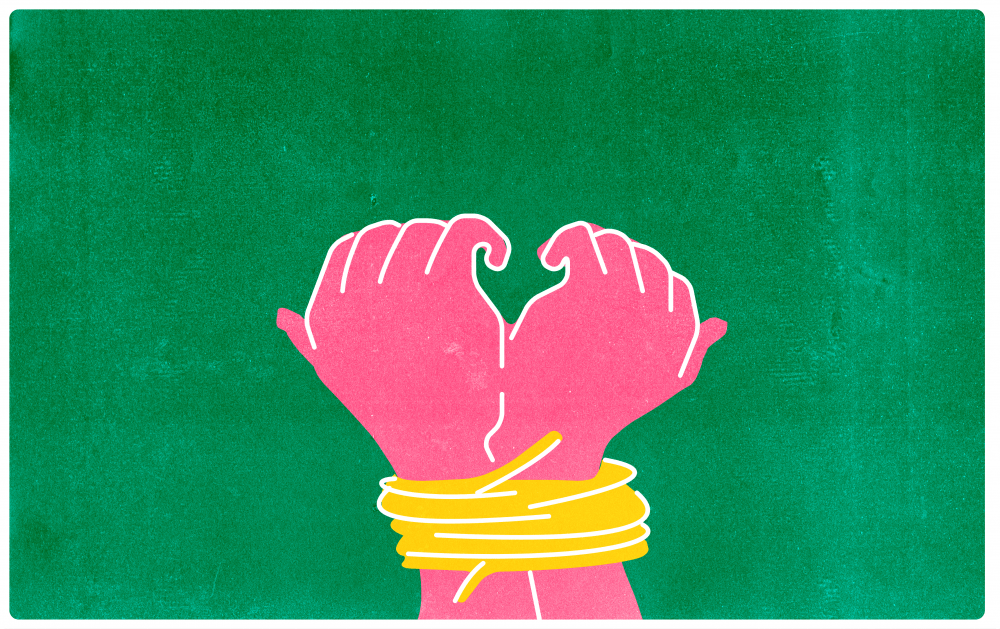Sex trafficking is a phrase with a connotation that invokes fear in many — a term that, more recently, has blown up on social media across Arizona.
Social media is a way to stay up to date with day-to-day news. Whether sources are reliable or not, people are exposed to a variety of stories published on Instagram, Facebook and Twitter. Due to this, lurid stories of kidnappings that are often exaggerated or plainly untrue can reach large audiences.
This is the case for some reports of sex trafficking around the Valley. Viral warnings have been posted across social media about kidnappings at Fashion Square Mall in Scottsdale, Arizona Mills in Chandler and The Shops at Norterra in Phoenix. The stories range from one girl being injected in the arm with drugs to many stories of strange encounters that rub people the wrong way.
Although posts of this nature are frequently shared and commented, Gilbert police told abc15 that they found no evidence to back up many reported incidents of kidnappings or other trafficking-related crimes.
Though many of the events described are extreme, and in some cases, untrue, trafficking does take place in Arizona and is on the rise.
However, forced kidnapping is very uncommon, according president Rachel Geiser of the All Walks Project at ASU, a chapter of a national nonprofit that spreads awareness about the truths of trafficking.
“We mostly do a lot of educating students and dispelling the myth,” said Geiser, a senior majoring in biochemistry and political science.
The myth she referred to is that sex trafficking is typically done through kidnapping and drugs, which is not the case.
Geiser stressed that the most common type of sex trafficking is performed by individuals called “Romeo Pimps," or people who pretend to be a friend or significant other to those who are already vulnerable from previous abuse or assault, and are easy to persuade.
Romeo Pimps will start a relationship with the victim and then force them into trafficking, typically through threats and emotional abuse, Geiser said.
“Kidnapping isn't very common. What’s common is being coerced into this relationship and by the time the women are deep in it, and are pushed into trafficking, it’s too late," Geiser said. "They’ll try to get out, and (pimps) might start to threaten them. A pimp might say, ‘I’ll take your sister, or traffic your sister if you don’t join.'”
The publicity surrounding human trafficking on social media has created a heightened awareness about the issue. While Geiser believes attention around the topic is good, people being misinformed about the problem is not.
"We have to be really careful not to get too distracted by big explosions of suspicion," said Dominique Roe-Sepowitz, the director of ASU's Office of Sex Trafficking Intervention Research and an associate professor in the School of Social Work, in an interview with abc15. "We really need to be measured in the way that we address it and make sure that our efforts towards sex trafficking go into the right places."
Despite the questionable viral stories and misconceptions being spread across social media, sex trafficking is still a prevalent issue on these digital platforms. Social media is one of the ways for victims to come into contact with traffickers.
From 2010 to 2015, The National Center for Missing and Exploited Children reported an 846% increase in reports of suspected child sex trafficking to the CyberTipline. The organization claims that the rise in statistics is due to the "increased use of the Internet to sell children for sex.”
Studies also show that social media has made it easier for traffickers to find children without being detected, said Celia Williamson, a University of Toledo professor in an interview with Phys.org.
“While 58 percent of victims eventually meet their traffickers face-to-face, 42 percent who initially met their trafficker online never met their trafficker in person and were still trafficked,” Williamson said in the interview.
Human trafficking is considered the world’s fastest growing criminal enterprise, according to the United States Department of Justice. According to the Justice Department, “no community is immune from being affected by the exploitation of human beings for commercial sexual activity”.
California, Texas and New York are considered top states for human trafficking, due to being major travel hubs. According to the National Human Trafficking Hotline, Phoenix ranked 16th on the list in 2016 with 478 calls, making up 1.76 percent of calls nationwide.
Eighty percent of the individuals trafficked were female, the hotline found, while the average age of entry into sexual exploitation is 19 years old.
Pimps can make a large sum of money off of each child they traffic, according to the Marin County Coalition to End Human Trafficking.
“A trafficker can make $150,000–200,000 per child each year and can exploit an average of four to six girls per year," said the coalition.
Instructor Samantha Calvin, a professor with a focus on human trafficking in the College of Nursing and Health Innovation, said she believes the main reason human trafficking is a problem in the U.S. is due to pop culture normalizing the sexualization and objectification of people.
“When we start accepting it (the normalization of sexualizing and objectifying people), it becomes a problem. Behaviors and dynamics open the door for less things to be accepted,” said Calvin during a presentation at a Sept. 19 All Walks Project club meeting.
The professor believes being an ethical consumer when surrounded by content of this nature can be a challenge. She advised students to be more willing to have uncomfortable conversations about the subject, and to be more aware of what they are watching or buying.
Calvin added that if students have plain and blunt conversations about the sexualization of consumer content, they have the ability to make the subject less taboo.
“Educate people, show them what kind of issue this is,” Calvin said.
Reach the reporter at myarmusg@asu.edu and follow @gannonmikenna on Twitter.
Like The State Press on Facebook and follow @statepress on Twitter.




